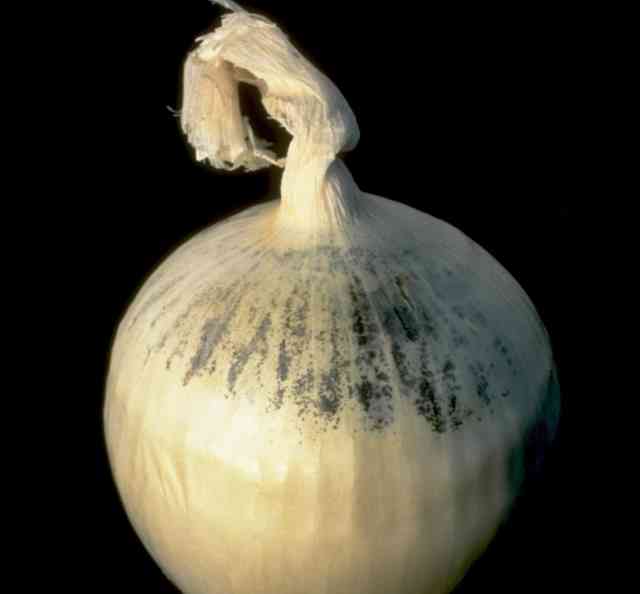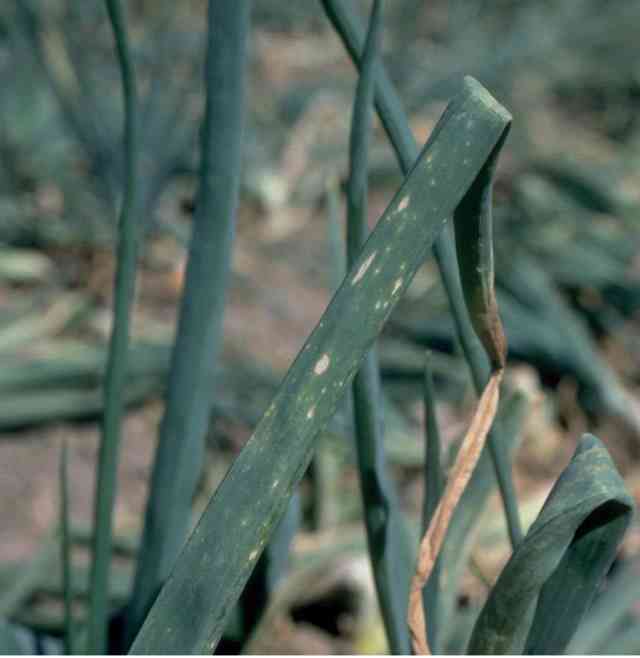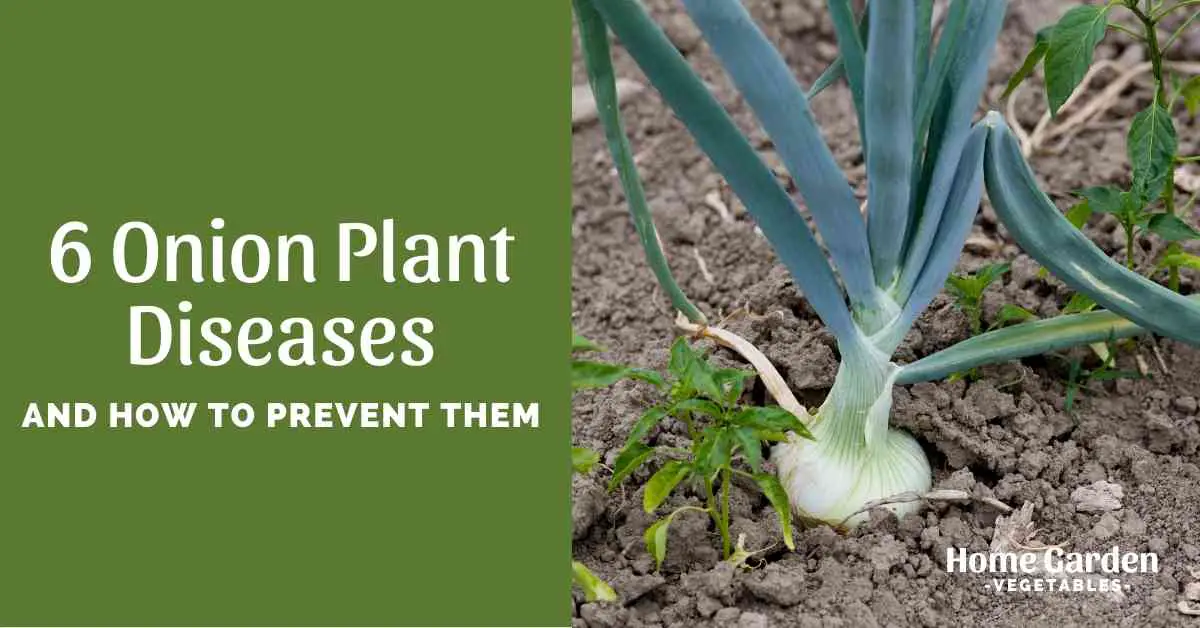Onion is a herbaceous biennial grown for its edible bulb. They’re one of the most commonly cultivated vegetables since they are so important in culinary use in almost every culture. While there aren’t many pests that will bother your onion crop since their pungency naturally deters insects, there are some diseases that you should keep a watch out for.
Here is a list of onion plant diseases that most commonly affect the crop.
Reader Poll: What online courses would interest you?
Black Mold

Black mold on onion is caused by the fungus Aspergillus niger and most commonly appears after harvest when the onions are in storage. They can also occur when onions are still in the ground, often near maturity. You’ll see streaks of black mold on the outside. It usually begins at the neck and may move down as the disease progresses.
The fungus thrives on decaying plant matter and is abundant in our environment. It’s almost impossible to prevent your crop’s exposure to the fungus. Prevention is the best possible approach to protect your onions from developing mold.
Clean the garden bed after each harvest and make sure the soil drains properly. Avoid puncturing the onions at harvest since wounds will allow the fungus to enter into the bulb. Cure the onions properly before storage. Use the damaged onions right away instead of storing them. After removing the affected layers of the onions with black mold, the unaffected parts can be consumed.
Subscribe to our newsletter!
Purple Blotch
Purple blotch in onions and related species is caused by the fungus Alternaria porri. It affects both the tops and the bulbs. Warm, wet climates favors the disease, and it appears as small tan spots on the leaves in the initial stages. The lesions become larger and sunken with purple margins and a yellow zone surrounding them. Severely infected tops often collapse to the ground. If the bulb is wounded at harvest, Alternia infection may spread to the bulbs.
Planting in well-drained soil, crop rotation, and proper irrigation, taking care not to wet the foliage can prevent the disease. Timely applications of protective fungicides can also help save your crop from falling prey to purple blotch.
Botrytis Leaf Blight

Botrytis leaf blight is very common among onion plants and is caused by the fungus Botrytis squamosa. The fungus overwinters on infected plant debris, with warm, wet conditions providing a favorable environment for the rapid spread of the disease. It’s a foliar disease that appears as small, oval, light green spots on the leaves. Older leaves are more prone to developing blight than younger ones. Numerous lesions on the leaves can cause the entire top to die back.
Rotate the crops and destroy cull piles after harvest to prevent the disease from overwintering. Space the plants sufficiently to allow ample air circulation and avoid drenching the foliage when irrigating the crop. Repeated protective fungicide applications as soon as the plants develop their first 5 leaves can also help protect the crop against botrytis leaf blight.
Downy Mildew
The air-borne fungus called Peronospora destructor is what causes Downy Mildew in onion and almost all related crops. Though it may not be as common as botrytis leaf blight, the fungus can quickly destroy the entire crop if the conditions are favorable. The fungus favors cool, wet climates, which is when the spores are dispersed through the wind.
Downy mildew initially appears as purple-brown mold patches on the leaves. Gradually the entire leaf will turn pale green or yellow and collapse. Several cycles of spore-dispersal and infection can occur following the first one. The disease spreads quickly and can destroy an entire crop within a month.
Plant disease-free seeds and practice crop rotation to prevent downy mildew in onions. Plant the seeds in well-draining soil and space them suitably to avoid crowding and humid conditions. Other than the preventive measures, using appropriate systemic fungicide can help recover the crop from an existing infection.
Pink Root
The soil-borne fungus Phoma terrestris is what causes Pink Root in onions. The disease is characterized by pink bulbs that darken to maroon or purple as the disease progresses. The bulb size is much smaller than regular, with the bulb being transparent and water-soaked. In case of severe infections, the roots die, and the plants are stunted and weak.
Since the fungus can survive in the soil to a depth of more than 17 inches, solarization can help reduce the levels of the pathogen in the soil. Plant resistant varieties and practice crop rotation to prevent the disease from hitting your onion crop.
Damping-Off
Damping-off is a common disease in onion plants and usually hits the crop during the seedling stage. A number of pathogens, functioning together or alone, can be responsible for the disease, including Pythium sp., Phytophthora sp., Rhizoctonia, and Fusarium sp. High soil moisture and high humidity help in the development of the disease.
The roots become infected and water-soaked, resulting in the death of seedlings. Sometimes, the disease can occur even before the seedlings appear. Damping-off can cause delays in germination, in addition to root and basal rots.
Choose healthy, disease-free seeds and avoid raising onions in the same spot you planted them last year to prevent the disease from occurring in the first place. Treat the seeds with suitable fungicides before planting. Planting in well-drained soil and keeping the soil moisture to a minimum can also prevent the onions from this disease.
Conclusion
So these are the most important diseases you should know about when growing an onion crop. Good gardening practices, including crop rotation, correct watering technique, and adequate spacing, can help prevent such diseases and secure a healthy harvest.

